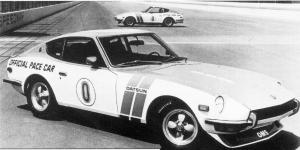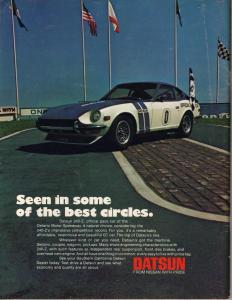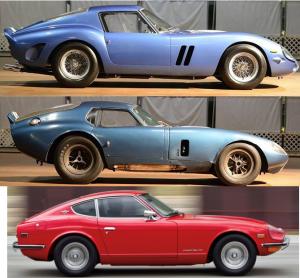Everything posted by 240260280z
-
Tuning this 3.0 on SUs...
Substitutes for stock L24 SU: http://www.classiczcars.com/topic/28785-su-needle-specs/?p=255075 Some CO profiling of stock in this as well as Madkaw SM measurements: http://www.classiczcars.com/topic/42685-dynojetted-the-l24-today/ The Beware Needles (CO profiled and bailed me out) Great Bruce info too: http://www.classiczcars.com/topic/43876-n49-n54-needles/ Interesting data on SM's: http://www.classiczcars.com/topic/17754-another-sm-needle-question/
-
Tuning this 3.0 on SUs...
Hitachi SU's on our Z's have 0.100" orifices in the jet nozzles. Different size nozzles can be purchased.
-
[2015] What Did You Do To/with Your Z Today?
NASA or King Tut inspired?
-
Seattle Area Z Brunch Saturday
Great stuff! FYI later 280zx's did away with the multi-part fuel rails. This removes the need for all those coupling hose weak links in the chain.
- Stolen 240Z
-
Tuning this 3.0 on SUs...
If you move the needles up, it is the same as lowering the jet nozzle. You may gain at idle but you will loose at WOT and cruise just like when you were 3 turns down. Your only solution is to remove some of the needle in the first two 1/8" stations below the shoulder. If you use a flat file you can measure needle thickness from the flat cut to the back side to compare both needles. You can also use your O2 sensor to measure your cuts.
-
Tuning this 3.0 on SUs...
You can do a few tweaks: Part 1 [WOT] Problem: Your WOT is 10.8-12.4 with the jet nozzle at 1.5mm down. You need this to be leaner at 12.5-13.5 so you need to come up a point in air fuel ratio. This means the orifice at the top of the nozzle needs to be plugged more by a thicker needle's cross-section. Solution: Raise the jet to 0mm. Use your fast idle screw on the throttle rod to get your idle at 1000-1500 rpm (or more... for test purposes) so you are in a richer part of the needle and can drive the beast at 0mm to do a test run to check WOT. Hopefully your WOT AFR will come up a point. If it has come up over 13.5 then lower the nozzle 0.5mm (1/2 a turn) and repeat until your WOT is ~ 13. Unfortunately you can not go to a higher AFR than with the nozzle at 0mm so that is your upper AFR limit at WOT. Part 2 [idle] Problem: Your idle is too lean. The needle is too thick near the shoulder and blocks the flow of fuel out of the nozzle's orifice. Solution: You need to thin the region of the needle just below the shoulder ~ the first 1/4". Spinning the needle in a chuck and sanding then measuring the thickness with a caliper is the standard way. You can also try filing with a delicate small jewellers file but it is non-standard way. This process will be try-and-test iterative AND you need to get both needles to the same shape to each pass the same amount of fuel. It seems like a challenge but you should be able to improve what you already have. You could also try buying some used needles and sanding the old fashioned way to make work.
-
Some FSM and Carparts Distributor Data
Weight 71 22109-71300 72 22109-A5500 74 22109-A5500 75 22109-A5500 Spring 71 22110-E4600 72 22110-E4602 73 22100-N3300 74 22100-N3600 75 22110-N4200 Cam 71 22132-E4600 72 22132-E4600 74 22132-N3600 75 22132-N4200 76 22132-N4300 Condensor 71 22102-00801 70-71 FSM D606-52 (manual) Total: 34.5 Init 17 Mech 6 @ 1000 Vac 5.5 72 FSM D606-52 (manual) Total: 34.5 Init 17 Mech 6 @ 1000 Vac 5.5 73 FSM D611-54 (manual) Total: 35 Init 7 Mech 11 @ 1400 Vac 6 74 FSM D6F3-01 (manual) Total: 39 Init 7 Mech 13 @ 1600 Vac 6 75 FSM D6F4-01 (manual) Total: 34.5 Init 7 Mech 10 @ 1360 Vac 7.5 (6 electrical) 76 FSM D4F4-01 (manual) Total: 34.5 Init 7 Mech 10 @ 1360 Vac 7.5 (6 electrical) 77 FSM D6F5-02(D6F6-06 Canada) (manual) Total: 36 Init 10 Mech 8.5 @ 1250 Vac 9 78 FSM D6F5-02(D6F6-06 Canada) (manual) Total: 36 Init 10 Mech 8.5 @ 1250 Vac 9 82 FSM D6K81-01 (manual) Total: 40 Init 8 Mech 8.5 @ 1400 Vac 15
-
condenser on coil positive is important.
FYI 72 FSM shows coil currents <= 1.5A DC with resulting spark gaps ~ 14mm and condensor of 0.22uF
-
condenser on coil positive is important.
~0.22uF and 500V-ish I think. If the capacitance goes too high, its discharge (too many electrons thus too high a current) can burn up the coil's primary. It seems that when the coils' primary magnetic field discharges, electrons flow backwards to the cap and to ground. The capacitor absorbs the transient (back EMF) caused by the collapsing primary field much quicker than without thus it induces a more concentrated impulse into the secondary (causing a better/stronger spark). Apparently without the capacitor, the spark produced is weaker and the back EMF can arc across the points burning them out. Here is my fav HV experimenter on youtube: FYI early spark gap coils were rated by how far the spark would jump. I believe one of the largest would produce 1 million Volts (42 inch arc) and had 280 miles of copper wire.
-
Cam Wear?
There is a right way to do a job and there are adequate ways to do a job. Replacing with new rockers is the right way. Using refreshed rockers is adequate in most instances (as done and documented by many) but it depends on the metal type & hardness, shapes of metal, oiling, and skill & judgement of the installer..... and, as always, some luck.
-
It Ain't Running Right!
Non-emission L24 engine is spec'd at 17degree initial. The emission version is 5 degrees. Check page ET-3 of the L20A, L24 Service manual. You should be able to work anywhere between 5 and 17 degrees so long as you don't over shoot 36-38 degrees at full advance ~3000 rpm. The faster your motor will advance after 1200 rpm, the better your motor will pull so long as you do not ping by advancing too quickly. (The weights, springs and canister on your distributor take care of how the timing advances from initial to full).
-
condenser on coil positive is important.
I thought it was just to supress radio emissions but it is actually part of a tuned circuit to improve spark and to minimize current damage to coil, breaker points or transistors.
-
Intermittent Loss Of Power-1972 240Z Stock
Usually it is fuel system debris. Once i had a points car that had no power on load. I trouble shot for fuel only to discover it was the distributor.
-
Cam Wear?
I hope you are lucky like Dr 240z and I were. I did the old-school non-detergent 30wt correct break in on a new Delta reground set of rockers, Delta cam, correct new lash pads and new Crane springs and retainers with lots of break-in grease and great oil flow before first fire up. 30wt was again used at 50miles with a new filter. Mobile 1 oil synthetic was used after 500mi. The cam was eaten ~ 1,500mi. 2nd try was a new Schneider cam and new reground Delta rockers with ZDDP oil treatment. One rocker started to fail but it looked like a manufacturing flaw like Grannyknot's. Swapping in a refreshed rocker did the trick. From this experience I think the metallurgy, quality of the machining, spring pressure, and the oil additives are all important for correct break in and long life.
-
My Datsun 280Z "Rustoration"
Words of wisdom. You will always lose if you play Chicken with a chicken. X2 Groan
-
My Datsun 280Z "Rustoration"
If you aimed higher you could have had Grilled Chicken...... groan.
-
O Degree Timing Mark
Now all will remember. 11:25-ish:
-
The first Z pace car
-
Similar shape when viewed from the side
- Stolen 240Z
http://metronews.ca/news/toronto/1334621/thieves-steal-vintage-sports-car-from-original-owner-in-pickering/- My Datsun 280Z "Rustoration"
I like the custom brackets! Nice work.- It Ain't Running Right!
6 may have dirt. Does it spit at idle or at higher rpms? If at idle then it would be the idle jet, or passage to enrichment screw or fuel filter. Flush it out well.- It Ain't Running Right!
Could be dirt blocking fuel flow. Do both throats 5 &6 spit or just one on the last carb? What do all 6 plugs now look like?- I Need Some Carb Jet Recomendations Please
Below 13 is "too stinky" - Stolen 240Z
Important Information
By using this site, you agree to our Privacy Policy and Guidelines. We have placed cookies on your device to help make this website better. You can adjust your cookie settings, otherwise we'll assume you're okay to continue.








